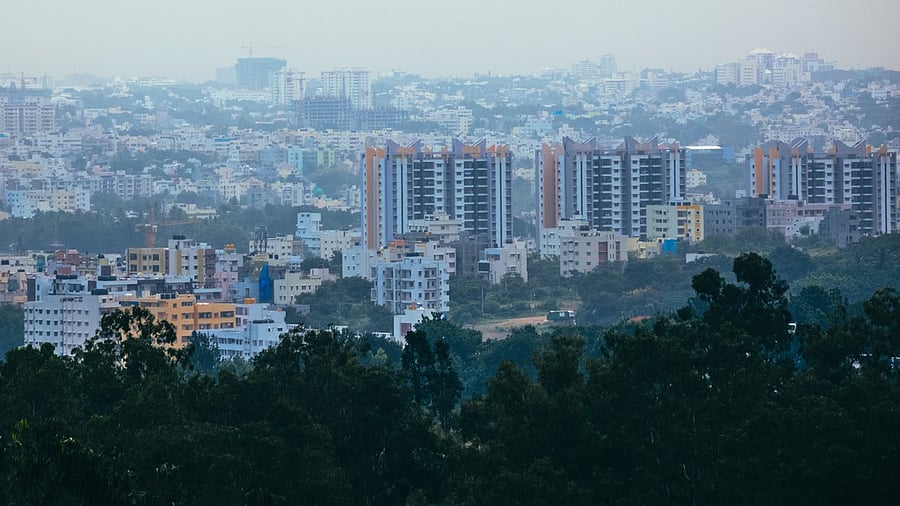
An image showing Bengaluru city
Credit: iStock Photo
Bengaluru: Bengaluru, along with nine suburban areas including Kanakapura, Nelamangala and Hoskote, will see a rapid rise in skyscrapers as the Karnataka government has increased the cap on the Floor Area Ratio (FAR) by up to 60 per cent of what is currently permissible. The tweak in zoning regulations will allow builders to construct extra floors by paying just 28 per cent of the guidance value.
This change is particularly beneficial for those who own large plots of land.
The revised policy, effective February 21, was introduced under Section 13-E of the Karnataka Town and Country Planning Act, 1961 -- one and a half months after objections were invited from the public through an official gazette.
The rule will benefit projects – especially larger than 5,000 sq ft – in areas governed by authorities like Bangalore Development Authority, Bengaluru-Mysuru Infrastructure Corridor Area Planning Authority, Anekal, Kanakapura, Ramanagara, Channapatna, Magadi, Nelamangala, Bengaluru International Airport Area and Hoskote.
The change is also expected to encourage joint development projects and amalgamation of small properties.
Builders can use the full FAR of 60 per cent by using two components. While premium FAR allows 40 per cent loading depending on the width of the road and size of the property, another 20 per cent FAR can be loaded by using Transferable Development Rights (TDR), which is given to property owners who surrender land for public projects.
For example, a builder owns 10,000 sq m of land where guidance value is Rs 5,000 per sqm: under the old FAR of 2.5 (or 25 per cent), the builder could construct up to 25,000 sq m of space (about five floors).
With the new policy, the builder can construct two additional floors by paying Rs 1,400 per square metre (28 per cent of the guidance value) for an extra 10,000 sq metres of construction. This would cost the builder Rs 1.4 crore.
Considering the square feet charge of Rs 5,000, the builder stands to generate a minimum of Rs 50 crore with two extra floors. Furthermore, the premium FAR will be easier to buy, unlike TDRs, which are not easily available in the market due to middlemen and bureaucratic hurdles.
The new policy also specifies that the guidance value of agricultural or undeveloped land cannot be applied to building sites and that unused premium FAR cannot be transferred. One key rule is that the premium FAR certificate must be surrendered before the building plan can be approved. There is a lack of clarity whether the existing buildings can take up extra floors by purchasing premium FAR.
Mallanna Sasalu, Chief Executive Officer of Provident Housing Ltd, welcomed the policy, emphasising that it was much needed in Bengaluru, where vacant land is becoming increasingly scarce. He noted that while developers may pass some savings on to customers, the primary advantage will be the ability to build vertically. He also pointed out that the policy won’t affect basic rules regarding driveways, open spaces and civic amenity sites.
Advocate Suhas Ananth Rajkumar said the premium policy may not help the smaller plots such as 20x30 or even 40x60 owing to height restrictions but added that the officials are allowing illegal constructions by collecting hefty bribes. He urged the government to put an end to this as it was taking a toll on the quality of life of people.